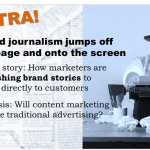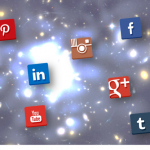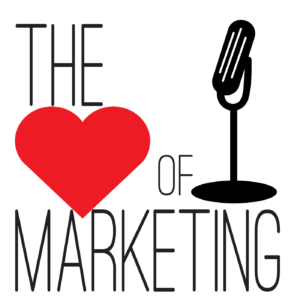“On a beautiful late spring afternoon, twenty-five years ago, two young men graduated from the same college. They were very much alike, these two young men. Both had been better than average students, both were personable and both – as young college graduates are – were filled with ambitious dreams for the future.
“Recently, these men returned to their college for their 25th reunion.
“They were still very much alike. Both were happily married. Both had three children. And both, it turned out, had gone to work for the same Midwestern service company after graduation, and were still there.
“But there was a difference. One of the men was a manager of a small department of that company. The other was the president …”
So begins the copy of one of the most successful and long-running direct mail letters of all time. It was written in 1974 for the Wall Street Journal and ran for decades. Some have estimated it generated $2 billion in subscription sales.
For years marketers have studied this classic piece of copywriting to learn the secrets to its success. It makes sense for content marketers to do the same today.
Like other timeless advertising, it captures our imagination through storytelling. This letter told a great story that linked peoples’ desire to succeed to the WSJ brand.
The anatomy of a brand story
Stories have always engaged, taught and persuaded people in far more powerful ways than rational arguments, data, statistics or repeated tag lines. We relate stories to our own experience. We connect with them on a human level. Told well, stories arouse our curiosity and pull us in.
How did this story do all of that?
- For starters, it sets the scene. We can share the universal experience of our own high school graduation, putting ourself into the scene.
- It appeals to our senses. We can imagine that beautiful spring day, smelling the fresh air, feeling a warm breeze – even hearing birds chirp in the background. Our imagination adds those details.
- It appeals to our emotions. We can feel the anticipation and hope for a successful future.
- There is a trajectory to the story line. It moves from the past into the present day 25-year reunion with all of the life events placed in between.
- It introduces an element of conflict. How did two lives seemingly so similar have such a different outcome? It’s something we’ve wondered many times ourselves.
- And the story has a resolution. It’s not part of the excerpt I shared in the opening, but the full letter goes on to reveal what made the difference in both of their lives. Check it out here to find out how it ends.
One more important element that runs throughout the story is its appeal to the whole brain. You sense and you feel, but the writer leaves enough out of the story to build suspense, engage your curiosity and allow you to make conclusions using your intuition. Too much detail and description robs you of that satisfaction. And it diminishes the level of reader engagement.
How do you apply these elements to your brand story?
Finding the core of your brand story
A lot of marketers struggle with this question. If they are in B2B or a technical industry they don’t believe storytelling is possible for their products or markets. And it won’t be, for one simple reason.
They are already focusing on the wrong thing: their products, their markets. The first step to finding the core of your brand story is to take the focus off of you and place it squarely on the wants, needs and desires of your customer. Then it will work for any business.
 One example from a few years ago is BASF, the global chemical manufacturer. Chemical products are not the most fascinating subject for creating a compelling brand story.
One example from a few years ago is BASF, the global chemical manufacturer. Chemical products are not the most fascinating subject for creating a compelling brand story.
Some companies in this situation might have been tempted to tell about their ranking in sales, their worldwide distribution capabilities or their technology leadership. But BASF told a different story.
It crafted a message saying “We don’t make the products you buy. We make the products you buy better.” This theme gave them a platform for telling a series of stories about how they add value to the products that enhance peoples’ lives.
When companies focus their marketing on the reason why they are in business – who they serve – rather than what they do, they can tell a story that will connect. There are B2B brand stories just waiting to be told:
- Heritage and connection to community
- The people behind the business who make it successful
- Case studies where the customer is the hero
- Innovative breakthroughs that improve quality of life for the greater society
About those two college classmates I mention at the beginning of this post: they were graduated from college together and together got started in the business world. So what made their lives in business different?
The copywriter’s answer at the end: “Knowledge. Useful knowledge. And its application.” Also a great answer for content marketers who want to tell compelling brand stories.
Image credit: Marketoonist.com












Speak Your Mind